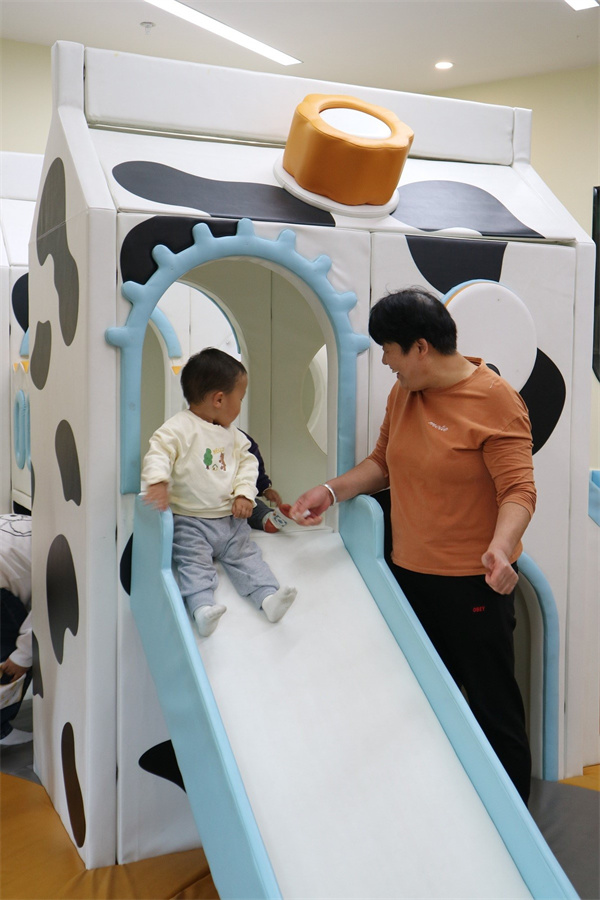Integrated communities bridge age gaps

Photo shows residents of the Binfen Community in Hangzhou's Binjiang district, Zhejiang province, participating in leisure activities. [Photo provided to chinadaily.com.cn]
As a regular activity twice a week, 68-year-old Liu Shaohai sits on the sofa with his neighbors in the public activity hall, eating snacks and taking turns singing karaoke.
"I'm satisfied with my life, as people of different ages have their locations in the community and we've got more chances to develop connections with our previously unfamiliar neighbors," Liu said, adding that he also takes an active part in other activities, such as gateball and table tennis.
As a resident of the Binfen Community in Hangzhou's Binjiang district, Zhejiang province, Liu benefits from the interim achievements of the integrated community program, which have brought considerate services, abundant activities and intelligent upgrades to residents in the area, improving their living standards and giving them a greater sense of belonging.
Launched in October 2022 with a duration of two years, the program stipulates that an integrated community should accommodate a population of 5,000 to 12,000 people and guarantee their convenient access to fundamental public amenities within a 15-minute walk.
A report on construction and development of urban communities in China published this year by the University of International Business and Economics and the Social Science Academic Press stressed the importance of community building and estimated that urban residents spend 75 percent of their time in the community and, by 2035, 70 percent of the population is expected to live in urban communities.
In July 2023, seven authorities jointly designated the first batch of 106 pilot communities in various regions to explore scientific and systematical approaches to high-speed development, high-quality life and high-level governance in urban communities.

Photo shows a mother and her child talking with a community doctor at the Binfen Community in Hangzhou's Binjiang district, Zhejiang province. [Photo provided to chinadaily.com.cn]
Consisting of five resettlement-housing residential areas, the Binfen Community is a typical example of a mixture of residents from all walks of life and of different ages in the pilot communities. Around 40 percent of the population is original to the community and others are renters, most of whom are young employees of high-tech enterprises.
The community provides a variety of facilities and services, such as professional childcare centers, supermarkets, hospitals, fitness centers and interest-oriented classes.
External elevators have been installed to address the problem of seniors struggling to go up and down the stairs. Baby strollers have dedicated parking areas, young people working overtime have 24-hour convenience stores, and every resident and even their pets can have their own family doctors.
The public activity hall often holds various activities such as free clinics, dessert making and traditional handicraft techniques classes. Through on-site and online registration, residents can both have free access to these activities and organize their own events.
"The operating model of integrated community effectively bridges the gap between the young and the old, as well as urban and rural individuals who have relocated to the area due to resettlement," said a community officer surnamed Xuan. "It fosters a friendlier atmosphere for a promising future."

Photo shows residents of the Binfen Community in Hangzhou's Binjiang district, Zhejiang province, spending time with their kids inside a children's activity room. [Photo provided to chinadaily.com.cn]





 play
play